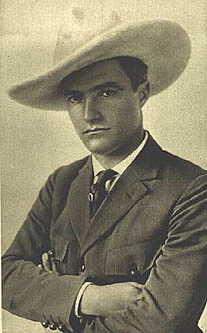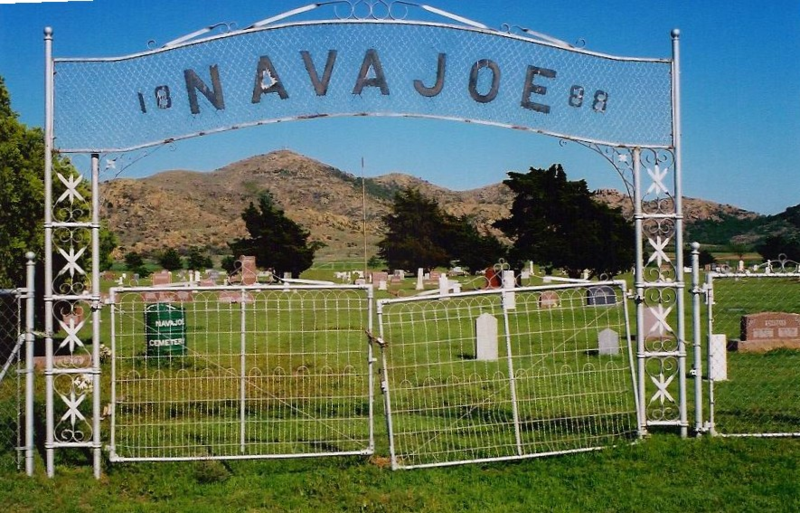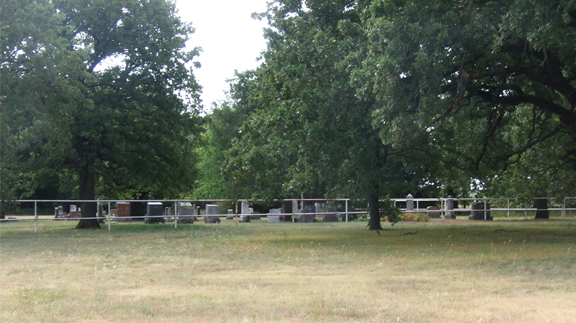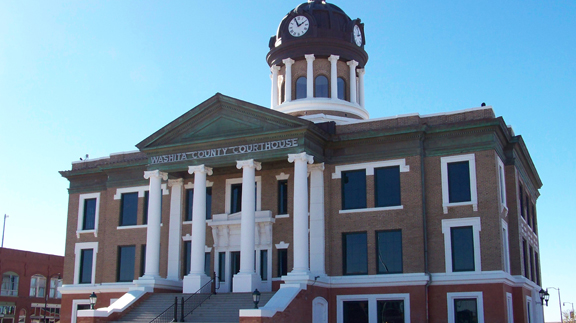Attractions
101 Ranch Wild West Show Remembered at Blackwell Event

101 Ranch founder George Miller always encouraged his three sons to think big, and in 1905 Joe, George and Zack Miller took his advice to heart. The three boys gave the already highly diversified 101 Ranch a new direction when they conceived the idea of going into show business, staging what they called “Oklahoma Gala Day.”
By this time, the ranch, first founded on leased property in Indian Territory in 1879, was located on thousands of acres that sprawled across both sides of the Salt Fork River south of Ponca City. In 1904 the brothers had visited the St. Louis World’s Fair where they witnessed large crowds taking in spectacular displays of Western showmanship. They also accompanied a traveling Wild West Show to New York in early 1905, and those two trips gave rise to plans for their own spectacle at the 101 Ranch. It would showcase the skills of their cowboys and ranch employees, as well as draw on Oklahoma’s large Native American population. Thanks to the consent of the U.S. Army, their plan included the appearance of captive Apache leader Geronimo, who was brought to the ranch from Ft. Sill to shoot a buffalo from an early-day steam-driven car called a “Locomobile.”
To assure the show’s success, Joe Miller found a way to cast the national spotlight on the new enterprise. He began publishing the ranch’s own newspaper, the Bliss Breeze, in the nearby town of Bliss. The scheme earned him an automatic membership in the “National Editorial Association,” enabling him to forge an alliance with several newspaper writers and persuade them to hold their 1905 national convention in the Oklahoma Territorial Capital of Guthrie. A side-trip included a visit to the 101 Ranch, where the brothers played host to newspapermen and the public, entertaining them with a rodeo and Wild West Show that featured emerging stars of future movie and rodeo fame.
When the dust settled that day in June 1905, the reported 65,000 people witnessing the first “101 Wild West Show” got their money’s worth and so did the Millers. The dozens of national newspaper editors present had more than enough material to write stories that excited audiences all over the country, propelling the 101 Ranch into the world of big-time show business.
Future movie star Tom Mix was one of the featured performers in the Miller’s first show. The former Guthrie bartender knew horses and riding from his boyhood days in Pennsylvania and had earlier been invited to work at the 101 Ranch. His initial reviews as a working cowhand were less than flattering as some Miller cowpunchers claimed they had to teach him to properly saddle a cow pony. One even observed he was “really not much of a cowboy,” because “he could get lost in an eight-acre pasture.” He said it was Mix’s job to “hang around the ranch and look pretty,” and there was no doubt Mix’s penchant for showmanship was the primary reason for his hiring. As the Millers prepared for their first show, Mix and other would-be performers traveled to New York with the already-established Wild West Show of Oklahoma rancher Zack Mulhall who billed Mix as “Tom Mixco, the “Mexican horse runner.” The odd description may have taught Mix and, later, his publicist, how easily he could reinvent his life story, something he did many times over during his career to the consternation of his biographers who still have trouble separating fact from fiction.
The handsome, dashing young cowboy sporting his trademark white hat excelled as a horseman and pistol shot in several subsequent Miller shows and eventually was offered a role in the 1910 Hollywood silent film, Ranch Life in the Great Southwest. It started a long and successful movie career that forever featured him as a “rough and ready cowboy.” Mix made a reported 336 films between 1910 and 1935 and historically is viewed as Hollywood’s first Western megastar, credited with helping define that genre for all cowboy actors who followed.
The first “101 Wild West Show” also starred Lucille Mulhall, whose family had moved to Oklahoma Territory from St. Louis in 1890. The Mulhalls quickly adapted to ranch life and Lucille’s father Zack began staging roping and riding contests that featured his own children. By age ten, Lucille was considered a top cowhand. Even though her mother tried to raise a “proper lady” by sending her to boarding school in St. Louis, her father gave in to her pleas to come home and enrolled her at a private school in nearby Guthrie so she could visit the ranch on weekends.
In 1899, “Colonel” Mulhall, as he was known by honorary title, started his own traveling troupe, dubbed the “Congress of Rough Riders and Ropers.” Naturally, the show starred daughter Lucille who rode her trained horse, “Governor,” dubbed “The Wonder Horse” by her adoring public. Later that year, the family was invited to play the county fair in their hometown of St. Louis, and their show eventually signed a young, mixed-blood Cherokee trick roper named William Penn Adair Rogers, later better-known as Will Rogers. It was Rogers who described Lucille Mulhall asthe “world’s first cowgirl and greatest rider of all time.” Lucille went on to fame as a world champion roper and the only woman to rope steers competitively with men.
Another cowboy-showman in the first 101 Ranch show was the incomparable Bill Pickett. The second of thirteen children born to former slaves Thomas and Mary Pickett, Bill attended school in his home state of Texas until the fifth grade, then went to work as a ranch hand to help put food on the family table.
Early on, the young cowboy observed how local ranchers sometimes used a special breed of bulldog to hold cattle down by biting their upper lip until they could be roped for branding. Pickett tried the technique on young calves by riding alongside the animal, dropping from the saddle and grabbing their neck. He then twisted the calf’s head upward and bit it on the lip, forcing the animal to the ground. As he grew to manhood, the small but well-muscled Pickett perfected this technique on the beef cows and longhorn steers that roamed the brush country of Texas. When he was eighteen, he performed in county fairs, demonstrating his “steer wrestling” method, which he called “bulldogging.” Bill and his brothers then formed the “Pickett Brothers Bronco Busters and Rough Riders Association.” By the 1890s, he had performed his “bulldogging” specialty throughout most of Texas, leading to bookings at rodeos and shows across the Southwest.
Aware that blacks were automatically barred from entering most rodeo contests, Pickett’s agent focused on Bill’s mixed-Indian blood, promoting him as the “Dusky Demon.” After his appearance at the famed “Cheyenne Frontier Days” in 1904, the Miller Brothers signed him for their 1905 ranch extravaganza. On show day, spectators watched in awe as Pickett entered the arena and coaxed his horse into a full gallop behind a running steer. Riding alongside, he slid from the saddle, grabbed a horn in each hand, dug in his boot heels, twisted the head up, and gnashed his teeth on the steer’s lip, forcing it to fall on its side. The crowd gave him a standing ovation, and “steer wrestling,” or “bulldogging,” soon became recognized as an official rodeo event. In the years since, Pickett’s technique has been modified to eliminate the actual biting of the steer’s lip, but it remains one of the seven official rodeo competition events.
In 1907, Pickett became a full-time 101 Ranch employee and signed a permanent contract with the Miller show. When not on tour, Pickett fell into the familiar routine of a regular ranch hand. When he died in 1932, Pickett’s funeral was said to be one of the largest ever held in Oklahoma. Zack Miller paid the ultimate tribute by calling him “the greatest sweat-and-dirt cowhand that ever lived.” Pickett was buried on a hill not far from the 101 Ranch house where his cowboy comrades placed a marker. In 1971 the legendary Bill Pickett was inducted into the National Cowboy Hall of Fame and Western Heritage Museum, and in 1989 he was named to the Professional Rodeo Hall of Fame.
That first 101 Wild West Show on thirty acres of pasture near the Salt Fark River led to several years of national and world tours and launched the careers of many famous rodeo and motion picture stars. The history of the show and the 101 Ranch will be celebrated in Blackwell, Oklahoma, Friday and Saturday March 27 and 28, 2020, at the Kay County Fairgrounds Event Center. Among many show and ranch artifacts will be Bill Pickett’s chaps, Lucille Mulhall’s riding skirt and mementos from Tom Mix’s enduring career. Other Western memorabilia for display and on sale include original cowboy gear, firearms, assorted antiques, rare photos and ephemera.
The show, presented by the 101 Ranch Collectors’ Association, is open to the public Friday 10 a.m. to 7 p.m. and Saturday 9 a.m. to 4 p.m.
For more great stories, check out the March 2020 issue of Oklahoma Farm & Ranch.
Attractions
Oklahoma Ghost Towns – Navajoe

Southwestern Oklahoma is rich with history and has a beautiful, rugged landscape. A lesser known mountain range, the Navajo Mountains sits in eastern Jackson County, just to the north east of Altus.
There, at the base of those mountains, used to be the town of Navajoe. It’s easy to surmise that the town took its name from the nearby mountains. As a side note, from my research, it seems that the Navajo Mountains got their name because of a failed Navajo raid. According to folklore, the Navajos attempted to steal Comanche horses, and were annihilated by the Comanches. Legendary Comanche Chief Quanah Parker gave a detailed account of a similar failed Navajo raid in 1848 or 1849, against his village in Elk Creek just north of the mountains.
Approximately 40 years later, in 1886 when the area was still part of Greer County, Texas, two men named W.H. Acers and H.P. Dale opened a general store in the area. The next year, “Buckskin Joe” Works, a Texas land promoter, attended a Fourth of July picnic in the area. The celebration included settlers, cowboys, and several Comanches led by Quanah Parker.
That same year, the town received a post office designated as “Navajoe” to avoid confusion to Navajo, Ariz. Around the same time the Navajoe school opened, and a couple churches were founded.
Eventually the town was home to more than 200 families, and had a booming trade center, complete with grocery stores, hardware stores, saloons, a blacksmith, a dry goods store, a hotel, and a cotton gin. It was a regular frontier time.
Unfortunately, in 1902, the railroad eventually bypassed Navajoe, ensuring its demise, as most businesses moved – buildings and all. Less than two decades later the Navajoe School was consolidated with Friendship and other school districts. Now, all that remains of the town is a small cemetery at the foot of the mountains. A granite monument, which was fashioned in 1976, pays tribute to the old town.
Eventually, in the mid-1960s, Friendship and Warren schools consolidated. The new school, which graduated its first class in 1964 and is still active in Jackson County, is called Navajo.
Read more in the February 2020 issue of Oklahoma Farm & Ranch.
Sources
Wikipedia.com
RedDirtChronicles.com
Attractions
Sugden: Once a thriving community

by Judy Wade
Hundreds of villages and small towns almost disappear each year. Some just fade away with little to mark their existence. Others have left ghostly reminders, and a few cling tenaciously to life. Sugden, Oklahoma, joined the list in the mid-70s. Like most of these communities, several factors were involved in its decline.
In Sugden’s case, it failed to receive enough votes to become the county seat of Jefferson County, the town was often inaccessible when Beaver Creek was flooded and there was an inadequate fresh water supply. The Great Depression and the drought were also contributing factors.
The story began in 1873 when brothers J.D. and Calvin Suggs came to the area and entered the cattle business on a large scale along Beaver Creek and Cow Creek, including the site of present-day Waurika and Sugden and the surrounding area. They ran as many as 40,000 head of cattle each year as well as large herds of horses.
The brothers built a double log house on what is now the south edge of Waurika to serve as headquarters for their spread. Homesteaders were attracted to the area, and a general store called “Sugg’s Den” was built in the early 1890s. When a Post Office was built in 1893, the name of the community became Sugden. The town was located five miles south and one mile west of Waurika.
Businesses included a cotton gin, bank, hotel, a church that also served as the school, a blacksmith and two newspapers, the Sugden Leader and the Sugden Signal. Two general stores served the needs of the people, one owned by R.P. (Bob) Grogan, who also operated a general store in Benvanue, Texas, just across the Red River to the east. By 1910, there were 321 residents. Local farmers shipped cattle, hogs, wheat and cotton on the Chicago, Rock Island and Pacific Railroad that passed through the community.
These people were true pioneers in a time when making a living was tough, and the law was made by those willing to defend their rights. The six-shooter was often the defender of law and order. It was told that J. D. Suggs shot three rustlers who were rounding up a bunch of his cattle one morning before breakfast.
The Suggs brothers leased a large amount of land from the Comanche Indians. Quanah Parker and some of his tribe would come to Sugden in the autumn and camp. Their teepees could be seen in every direction. The Indians gathered and sold pecans, and the Suggs brothers gave them beef.
One of the Suggs brothers’ valued employees was Mort Mitchell, a well-respected Black man who herded cattle all over the region. He was a familiar figure in and around Waurika.
Calvin Suggs died in 1902. J.D. passed away in 1925. He was a multi-millionaire at the time of his death, having bought several other ranches.
By 1940, Sugden had only 171 residents. Because of the declining population, the Post Office was closed in 1955. The 2010 census showed 43 people still living in the community. Abandoned homes and barns can be sees scattered throughout the community, some reflecting an opulence of days gone by. Tombstones of former residents rest in the quiet shade of a well-tended cemetery.
The story of Sugden is one of adventure, excitement and hardship. It is the history of a people who wrested a living from the land when the state of Oklahoma was developing.
Sources:
Oklahoma Historical Society
Dyer, J.M., History of Jefferson County
This article originally appeared in the September 2018 issue of Oklahoma Farm & Ranch.
Attractions
Washita County Courthouse

By Staci Mauney
The Washita County Courthouse, located in New Cordell, Okla., has a colorful history that began long before statehood. Stories abound about the location, with local residents relating details of stolen court records ending in a gun fight, a mysterious fire and most recently, a movie filmed with A-list celebrities. The city of New Cordell, commonly known as Cordell, was established in 1897 when H. D. Young, a local merchant who set up shop one and a half miles from the present location, moved his general store and post office to the new site.
Throughout the years, the courthouse has been the scene of drama and suspense. In 1899, two local homesteaders and farmers, A. J. Johnson and James C. Harrel, donated land for the courthouse square and arranged for an election to have the county seat moved from Cloud Chief, Okla. Controversy surrounded the city as questions of legality arose after the election. Because Oklahoma was still a territory at the time, a county seat could only be established by Congress. The election was finally sanctioned by Congress in 1906. In the meantime, the original wood-frame courthouse was moved from Cloud Chief to the present location in 1900. According to local lore, a gun fight broke out when some impatient citizens moved the court records from Cloud Chief to Cordell in the middle of the night. Even now, residents recount how the county seat was “stolen.”
In 1902, construction began on a new, wood-frame, two-story courthouse to replace the courthouse brought over from Cloud Chief. In 1909, the building was destroyed by a suspicious fire, believed to be arson. Just three nights before hearings were scheduled for cases involving a variety of whiskey charges, cattle thefts and horse thefts, a fire broke out in one of the courtrooms. The arsonist was never caught.
Solomon Andrew Layton and his firm, Donathan, Moore, Layton, Wemyss & Smith, designed the building in both 1902 and again in 1911 after the fire. Layton was also the architect for the Oklahoma State Capitol building in Oklahoma City. The current building, completed in 1913, was designed in the Classical Revival style.
A recent renovation of the interior of the courthouse began in 2013 and was completed just over two years later. This renovation began during the 100 year anniversary of the courthouse. According to local retail business owner and city council member, Terry Patton, the courthouse will last for another 100 years. One of the most striking features of the courthouse is the large, central dome with a four-sided clock that can be seen in all directions by those visiting downtown.
The Washita County Courthouse square became a major economic boon for both the city of Cordell and Washita County. Buildings sprang up around the courthouse square and surrounding area, including the city hall, an opera house, the Carnegie Public Library (now the Washita County Museum), the post office and the county jail.
The courthouse and its square continue to contribute to the economic stability of the area. Over the years, the area has seen businesses such as the Frisco Railroad set up there as well as factories. The downtown area now has more service industries than retail, although several small businesses remain around the square.
Patton knows firsthand the benefits of the courthouse square location, both for his business and for the city. He has owned Cordell TV, Appliance and Furniture, located on the square, for 27 years. After taking a class in heating and air at the area vo-tech, now the Western Technology Center, he received on-the-job training from a local businessman. At the end of his training, he was hired and eventually bought the business.
As a member of the Cordell city council for 11 years, Patton has seen tourists from across the United States taking pictures of the courthouse and eating at local restaurants. Because Cordell is the county seat, people come from all over the county to take care of business and contribute to the local economy.
“It’s a pleasant experience owning a retail business in a small town,” Patton says. “You know your customers by their first names.”
In 2010, filming of The Killer Inside Me, a crime drama set in the 1950s, took place around the courthouse square. On any given afternoon during filming, Casey Affleck, Jessica Alba, Kate Hudson and Simon Baker could be seen discussing the script with director Michael Winterbottom and producer Andrew Eaton in front of local businesses. Local residents who had been hired as extras milled about, waiting to be called for their scenes.
The courthouse square was chosen as one location for filming in Oklahoma because the historic appearance was just what was needed for the movie setting. Businesses repaired some of the facades prior to filming, and some businesses were given new names and new signage to fit with the 1950s setting.
The use of the courthouse square in the movie provided an opportunity for publicity for the city of Cordell. Media crews descended on Cordell, allowing the city – and the courthouse – to be the center of attention.
In 1984, the Washita County Courthouse was added to the National Registry of Historic Places, and the courthouse square district was added to the registry in 1999. Visitors and residents alike enjoy the benefits of the area as the iconic Washita County Courthouse is on display every day, with people coming from all over to get a glimpse of history.
**This story was originally published in the January 2016 issue of Oklahoma Farm & Ranch.
-

 Attractions8 years ago
Attractions8 years ago48 Hours in Atoka Remembered
-

 Country Lifestyle10 months ago
Country Lifestyle10 months agoJuly 2017 Profile: J.W. Hart
-

 Country Lifestyle9 years ago
Country Lifestyle9 years agoThe House a Treasure Built
-

 Country Lifestyle4 years ago
Country Lifestyle4 years agoThe Two Sides of Colten Jesse
-

 Outdoors7 years ago
Outdoors7 years agoGrazing Oklahoma: Honey Locust
-

 Equine8 years ago
Equine8 years agoUmbilical Hernia
-

 Outdoors5 years ago
Outdoors5 years agoPecan Production Information: Online Resources for Growers
-

 Farm & Ranch7 years ago
Farm & Ranch7 years agoHackberry (Celtis spp.)




